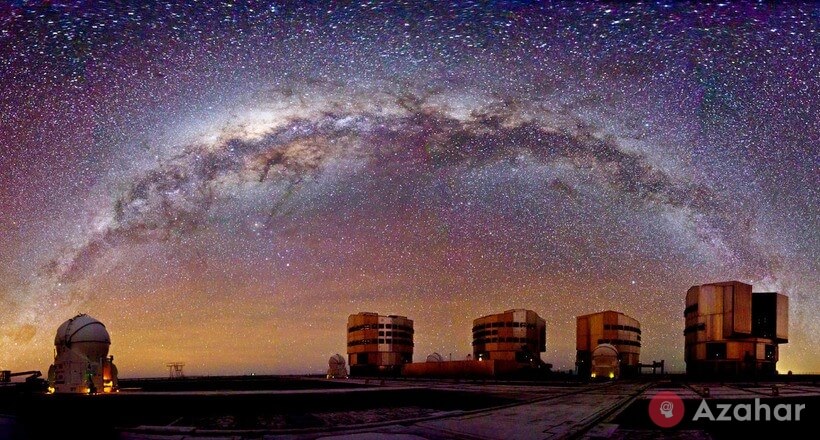Chile - the country of astronomical observatories and the largest telescopes in the world

Chile - Powerful telescopes of the Observatory and modern humanity needs to observe outer space. With their help, it is possible to look beyond the boundaries of the Solar system and dive into the mysterious world of the Universe. As a rule, each country places them within its territory in the most appropriate places. But there are exceptions to this rule when countries are powerful modern laboratory is very far from its borders. And the most popular location for such facilities in Chile.
In Chile, a small country stretching along the Pacific coast, the largest number of observatories in the world. Here are the largest telescopes owned by the US and the EU, and sites under construction in our days the Grand telescope also located in Chile. But what is so attractive in this South American country that everyone is in a hurry to post here your Observatory?
Chile is the country of astronomical observatories

The answer is simple — the Atacama desert. This dessert is the driest place on the planet that says that days with precipitation, and consequently, cloudy days with poor visibility no. If there are troubles, it is extremely rare. The second important factor is the quality of the air.
Almost dry air whose humidity is negligible does not contain impurities and contaminants from large cities, which is just not there. In addition, from the southern hemisphere, you can observe the Central part of the milky way and many other objects that are not visible from the observatories located in the Northern hemisphere. So what are the astronomical Observatory located in the Atacama desert and what objects are currently under construction.
1. ALMA — Atacama Large Millimeter Array



This is a complex of radio telescopes, consisting of 66 antennas. Complex ALMA is the largest and most expensive astronomical object that is currently on planet Earth. This is a joint project of the United States, Europe, Brazil, Chile, Japan, and Taiwan.
2. Paranal Observatory



3. La Silla Observatory



This Observatory also belongs to the European Southern Observatory and is composed of 18 telescopes. The Observatory is located in the southern part of the Atacama desert at an altitude of 2400 meters.
4. Las Campanas Observatory



This Observatory is located 27 kilometers from La Silla and belongs to the Carnegie Institution (USA). Here already operates a number of telescopes, and in 2020 it is planned the launch of the Giant Magellan telescope, whose construction is already underway.
5. Large Synoptic Survey Telescope

This Observatory, located on top of a mountain Gray-Bacon, is under construction and belongs to the United States. An optical telescope with a mirror diameter of more than 8 meters is scheduled to launch in 2020-2022.
6. Extremely Large Telescope

It is also under construction at the European Southern Observatory, the opening of which is scheduled for 2024. At an altitude of over 3000 meters on top of mount Armazones, near the Observatory, Paranal is planning to deploy a powerful telescope with a mirror diameter of 39 meters.

The Atacama desert is a popular tourist attraction. Here is the famous sculpture "Hand of the desert" and the most beautiful national parks. Recently become increasingly popular tours in the Observatory located in the Atacama region, in particular, the very interesting tours are organized by the ALMA Observatory.
If you like the Article please Share it with your friends and family.




